Struggling with pain that just won’t go away? Tired of feeling like you’re just another number in the healthcare system? At Nicky Snazell Clinic, we believe in a different approach—one that puts you and your needs first, offering not just relief but a path to a better, pain-free life.
For those of you who have been with us for a while, you already know the effort we put into making our clinic a special place. But it’s always worth taking a moment to reflect on what sets us apart and why that matters for you.
A Relaxing Escape Right on Your Doorstep
Our clinic, tucked away in the tranquil Staffordshire countryside, is more than just a place for treatment—it’s a space designed for your comfort and relaxation. The beautiful, restored grade II barn offers a welcoming retreat from the hustle and bustle of daily life. From the moment you walk through our doors, you’re greeted with a warm smile and a cosy atmosphere. Whether it’s the inviting sofas, the freshly brewed ground coffee, or the crackling fire on a cold winter’s day, we want you to feel at home.
We know that a calm mind is key to recovery, which is why we’ve put so much care into creating an environment that helps you relax. And of course, easy parking and direct access to the building mean that your visit starts smoothly, even before your treatment begins.
A Team That Cares Like Family
At the heart of our clinic’s success is our exceptional team. When we select new members—whether for therapist roles or administrative positions—we look for more than just technical expertise. We seek individuals who are team players, with a positive and caring attitude. This helps us maintain the warm, “part of the family” feeling that defines the Nicky Snazell Clinic.
Because we have advanced technology and skills not found elsewhere, the ability and desire to learn are paramount for every team member. To ensure our team stays at the cutting edge, we provide ongoing professional development through weekly CPD (Continuing Professional Development) sessions and bring in third-party experts for in-house training. This commitment to learning means that every member of our team is always ready to deliver the highest standard of care.
Advanced Technology, Traditional Care
One of our core beliefs is that effective pain relief requires both time-tested hands-on care and the right technological support. While we don’t have advanced imaging like MRI on-site, we’ve built strong partnerships with third-party providers to ensure you have access to high-quality imaging when needed. And the best part? We can secure competitive rates and rapid turnaround times, so you won’t be left waiting for answers. This ensures that you receive a swift and accurate diagnosis, enabling us to tailor your treatment effectively.
A Clinic Built on Passion, Experience, and Continuous Learning
Nicky Snazell’s lifelong dedication to helping people overcome pain is the heart of our clinic. Her journey has taken her from the UK to places like the USA, Canada, Korea, and China, where she sought out the best techniques in pain management, including GunnIMS. Her holistic approach, detailed in her first book The 4 Keys To Health, ensures that every client receives a tailored plan that addresses not just the symptoms but the underlying factors of their condition.
Alan, Nicky’s husband, joined the clinic with a vision of contributing in a meaningful way. Despite coming from a successful career as the Group Managing Director of six aerospace companies, he recognized the need to deepen his understanding of healthcare. Alan took this challenge head-on, studying anatomy and massage for a year, followed by a course in deep tissue massage, and then two and a half years of Chinese Medicine in London. He spent countless hours shadowing Nicky during over a thousand assessments and treatments, learning the nuances of client care and mastering the use of all our advanced technology.
For several years, Alan treated clients directly, applying his skills and knowledge to help them manage pain. His experience in hands-on care, combined with his technical expertise, provided a unique perspective that now informs every decision he makes in his current role. As the clinic grew, Alan transitioned to focus on administration, marketing and strategy, bringing a blend of hands-on knowledge and business acumen that has been instrumental in shaping the clinic’s direction.
A Focus on Lasting Results
We often see clients who first come to us for an acute problem, like a sports injury or back pain. But as many of you know, our approach doesn’t end there. For those managing chronic conditions, a little maintenance care can go a long way. Regular, but infrequent, treatments—often just four times a year—can make all the difference, helping to keep you active, pain-free, and enjoying life.
This preventative care not only keeps flare-ups at bay but also ensures that you don’t need more intensive treatment when problems arise. It’s about looking after your health, so you can keep doing the things you love without being held back by pain.
Thank You for Being Part of Our Family
At the Nicky Snazell Clinic, our clients aren’t just numbers—they’re part of our family, and we understand the importance of living a pain-free life. We’re here for you, just as you’ve been with us, and we’re always looking for ways to offer the very best care and support.
Thank you for trusting us with your care, and for being part of what makes our clinic such a special place. Here’s to many more years of health, healing, and happiness together.
Have you ever been haunted by a knife-like pain down your leg? Not just down your leg but in every aspect of your life. Making the simplest of tasks, like putting your socks on, impossible.
Imagine a pain that shadows you from the moment you get up and even haunts you at night, stopping you from sleeping.
You are not alone. Nearly half of us have suffered this at some time in our lives.
To learn more about sciatica and how to treat it, read on
It’s called sciatica and its root cause is a modern lifestyle of poor posture and weak muscles.
The videos explain what sciatic is and how the structure of the spine is vulnerable.
The sciatic nerve is a big nerve running from the back to the feet. Nerves, any nerves in your body in fact, don’t like to be squeezed and tell you quickly about this by causing pain. Typical causes of nerve compression are:
• Spinal discs act as cushions between the bony vertebrae, allowing movement and keeping the discs nicely spaced apart, allowing nerves to move freely and without pain. If those discs get compressed sufficiently, nerve compression and pain can result.
• Powerful back muscles can react to this nerve compression and go into spasm, increasing nerve compression and pain.
• Each pair of spinal vertebrae have joints between them to help control movement, called facet joints. These joints get worn with age and trauma and can eventually cause further nerve irritation.
• Our bodies are covered in a layer of connective tissue below the skin (imagine bubble wrap) and this tissue can become less flexible as we age, also leading to possible nerve irritation.
These underlying causes are nearly always quickly reversible with the correct lifestyle adjustments, adherence to exercise prescriptions and hands on physiotherapy. In more severe chronic cases, especially with locked in muscle spasm, specific dry needling may be required. There’s no one size fits all solution. A thorough assessment and treatment plan will be the most effective and fastest solution.
If your physiotherapist has any concerns, she or he can touch base with your doctor for bloods, x-rays or a scan.
Off the shelf pain meds, like anti-inflammatory with paracetamol can help. Your pharmacist can advise if its safe for you to take them with preexisting conditions or other meds.
or call 01889 881488
Jean, Erica & Charlotte will be happy to help
“Mr Roo referred me to you, said you are the clinic of last resort, as you fix problems others don’t or can’t, and he knows you will listen to me.
“I love my grandkids. I love my garden, I love to feed to birds, the hedgehogs, it’s my world, my life. Right now, I can’t do any of this because it’s agony and I don’t have a life.
I get phone calls from my doctor who prescribes drugs that don’t work. I have just seen a private surgeon at £19 a minute. He didn’t listen to me. I wanted help, I wanted him to listen, I wanted to know what I could do, who I should see. He just said nothing could be done with total disinterest, that surgery at my age was a waste of time and so was physiotherapy.”
Isn’t this sad? No one listened, no one gave her any hope.
“I have a scan, here, look, I don’t understand what it means. Can you help.”
This is what we did…………………
The scan showed a narrowing in a disc and some of it had squashed out like toothpaste, crushing a nerve in a rather arthritic little spinal joint. This little tiny part of her back meant she couldn’t pick up her grandkids, walk far, sleep or bend over gardening.
A detailed assessment showed us where the physical problem was, her general fitness and how she moved (her biomechanics). We needed to gently open up her locked-down spinal joint, quell the inflammation in her disc, and release the muscle contracture trapping the nerve.
Just as important as the physical treatment, we also needed to explain how other aspects of her health and mental stress were affecting her and her pain. To do this we explained the 4 Keys to Health: mindset, fitness, food and lifestyle and how a simple red, amber, green traffic light approach could help guide her to take the positive steps to better health. This in turn would help protect her from COVID and her pain.
We gave the patient her life back
After just 3 sessions she was no longer in physical pain and perhaps more importantly, had got her life back, comfortable in the knowledge that she had been listened to and that what was important to her had been understood. In her sessions, we gave:
- Advice on the relevant keys and how to move to 4 green keys.
- Counselling to reduce stress/ improve the immune response
- Laser to ease the pain and help reduce the inflammation.
- Electroacupuncture to reduce the pain and inflammation
- IMS dry needling to cut through fascia and remove muscle contracture, taking pressure off the nerves
- Exercise to help reduce the disc bulge with specific manual mobilisations and robotics
- Deep oscillation massage to soothingly reduce inflammation further
- Gentle hands on healing to further boost the response
If you are in pain, we can help
Call 01889 881488 Now
Jean, Erica & Charlotte will be happy to help
Our loyalty scheme has been a tremendous success and much loved since it was launched many years ago. Those of you who are familiar with this scheme will remember that we issued cards at reception which allowed you to record up to 10 loyalty stamps, one stamp for each appointment.
COVID then came along and threw a spanner in the works, as we were no longer able to issue cards for health reasons. This break, however, gave us the opportunity to rethink how the scheme could be improved both for you and us. We realised that we were in the process of installing some very powerful software and this, when operational, would allow us to develop a much more effective solution which would save you time on the phone and at reception.
We are delighted to tell you that our new software-based system is up and running and this means we can tell you almost instantly what your balance is on your loyalty account.
Didn’t Know We Had A Loyalty Scheme?
Well, Read On!
Now many of you who first joined us post COVID lockdown might not be aware we have a loyalty scheme and that you may have credit on your account. For those of you in this situation, this is how it works: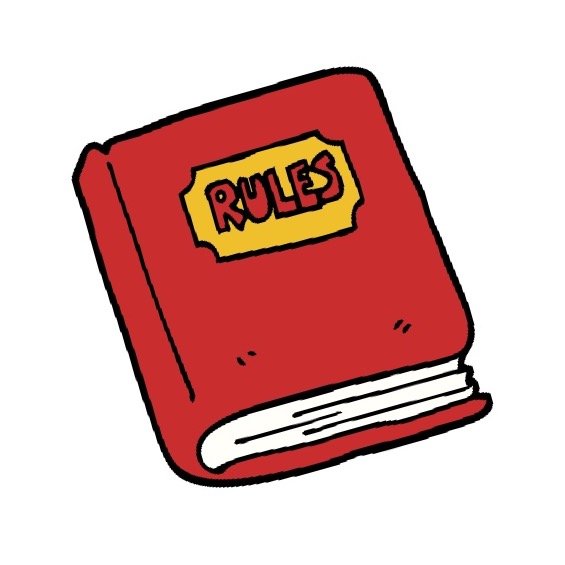
- You earn one loyalty credit for each appointment attended and paid in full
- Once you have 5 credits, you can exchange those in for a £10 discount on your next appointment.
- You can exchange multiple discounts at the same time. For example, 10 credits would get you a £20 discount and so on.
- Loyalty credits are not transferable or redeemable for cash
Our new system has been logging credits earned and exchanged since 1st July 2020, so fear not. Your account will be up to date.
Don’t Miss Out. Redeem Your Older Than One Year Old Credits Before 1st February 2023
We are taking the opportunity to update the rules of the scheme and from 1st February 2023, any credits which are over 12 months old will expire. Also, only credits earned since 1st July 2020 will be redeemable up to that date.
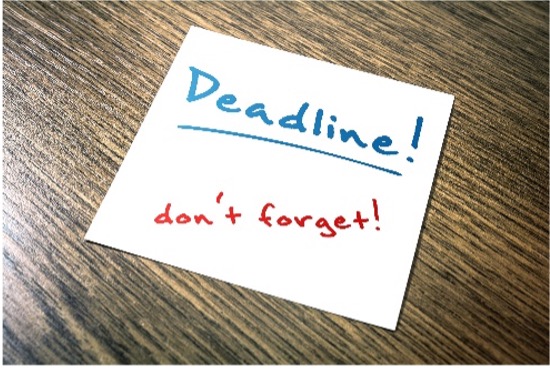
We are giving you plenty of time to use older credits earned between 1st July 2020 and 31st January 2022. Don’t miss out. Exchange them before 1st February 2023, or they will expire.
Still, Prefer The Cards?
The loyalty cards of old have been a very helpful reminder to many about their credit status, so much so that many may prefer to continue to get a card. No problem! We can give you a card if you wish, with the main log being available to you at any time from our software.
If you are in pain, we can help
Call 01889 881488 Now
Jean, Erica & Charlotte will be happy to help
Before I tell this story, I need to explain a bit about my background. I grew up in a scientific family, with a father and two brothers very much on the science rather than arts side of the seesaw. At school I was guided into science from the age of 13 and ended up studying engineering, just like my brothers. Since then, most of my working life has been in aerospace, surrounded by people who deal in facts and figures. In short, I had zero experience in anything spiritual and before this experience would have derided it as hairy fairy claptrap.
After leaving the aerospace industry behind in 2003, I chose to work as my own boss and started a health clinic business with Nicky my wife. She provided various treatment skills, including Physiotherapy and I provided the business background. Aware that I knew little about the health industry, I took myself back to college at Stafford for a year and subsequently to London for two and a half years, studying Chinese Medicine.
It is here my story unfolds.
My course work in London required many weekends and I soon got into the routine of travelling early Friday evening to London by train and then getting the tube from Euston up to Tufnell Park, where I then walked down Tufnell Park Road and stopped off at a clean and well-stocked shop halfway down, to get some tea, which I would eat at a fairly basic B&B.
This particular Friday, I was going to be unable to leave at my normal time due to work commitments, but I would still have no problem getting to the B&B at a not ridiculously late hour. That afternoon I mentioned to Nicky that I had had a vision a couple of times of being stabbed, which I put down to an overactive imagination and thought nothing more about.
I was keen to do some revision on the train, but this got interrupted by the stabbing image getting more and more frequent, to the extent it really started to spook me. I was in an interesting quandary as on the one hand, my scientific background told me it was just my mind stuck in a loop and couldn’t possibly be real. On the other hand, I was spooked, and any thoughts of studying went out of the window as fast as the scenery rushing past. By the time I made my way down to the Northern line platform at Euston I was contemplating going back up and getting a taxi direct to the B&B. It was my stomach that overruled that, as I needed something to eat and anyway, I was overreacting, wasn’t I?
My short tube journey to Tufnell Park, acted to intensify the feeling that I was going to get stabbed that night. As I stood at the corner outside the tube station, I forced myself to focus on getting something to eat. The later journey time meant that my favourite shop would already be closed, so an alternative was needed and there on the other side of the road was my saviour. Not as appealing as my normal haunt, after all I had seen it many times before and always written it off, but needs must, and it obviously sold food. I crossed the road where I had never crossed before.
My earlier impressions of the shop were fairly accurate, I bought up and decided that it would be my last visit. Outside I turned left and stopped to consider my walk to the B&B, which was about 5 minutes away. Next along from the shop was a GP’s Practice and between the two was a driveway to the back of the corner buildings.
I can only describe what happened then was like being overwhelmed by an intense surge of fear. I was instantly terrified and just wanted to get away. My senses were on full alert, and I was convinced that my visions were about to come true. I walked straight down the centre of the road, keeping maximum distance between me and any perceived danger points, like dark alleyways. It was difficult not to run, I was in full fight or flight mode, cortisol flooding my system and my heart racing.
I made it the B&B and couldn’t get into my locked room soon enough. I collapsed onto the bed to calm down, unable to face any food or fluid and went through multiple phases of relief. Eventually, I tried to make light of the whole experience and lent heavily on my upbringing and decided that I had been an overdramatic idiot.
After a fairly fitful sleep, I was relaxed. I convinced myself the whole thing had been imagination gone wild. I needed to get to Camden Town, and this meant retracing my steps back to Tufnell Park tube station.
As I got to the tube station, I looked across to the GP surgery and corner shop. The gap between was cordoned off by Police tape. An unlucky soul had been murdered there the night before. He had been stabbed.
An Epitaph
I have no memory of having any kind of similar experience to this before this event. It’s not impossible though, because nearly everybody I knew would have laughed in my face if I had suggested such a thing. It’s highly likely that being married to Nicky, observing her skills and listening to her beliefs, has opened a door in me that I didn’t even realise existed.
I cannot rub out this experience. It happened. Why did it happen to me? Who knows? But without a shadow of a doubt, I picked up on a stabbing more than eight hours before it occurred and from more than 100 miles away. I have no idea how this happened.
Has it happened again? Only once and nothing so significant, although it could have been. Nicky and I regularly drive to Norfolk and not being keen on the boredom of motorways and the A14, we have created a very nice cross-country route, which takes us through some very pretty countryside and allows us to stop halfway at a nice pub in Corby Glen. The route takes us across the A1 and through Colsterworth, famous for being the birthplace of Newton. One night we approached a crossroad in Colsterworth, with the road on the left being concealed behind houses. Although we had right of way, I braked hard suddenly before the junction and shouted to Nicky a car was going to come straight across in front of us. Seconds later a car shot out from the left and went across the road in front of us, travelling at a speed that would have caused a serious accident if we had been in the way. We would have been if I hadn’t braked.
I can’t explain any of this and no doubt many would try to fob it off as a couple of made-up stories, because they would have no basis to justify belief. I understand and sympathise with this, after all I would have done exactly the same before these experiences.
My view is that the life that most of us lead, the information we are given, the environment we are provided for most of us all provoke disbelief of anything intangible.
It is only the rare personal experiences of the tiny few that allows a different perspective to be even considered.
For me, I cannot possibly return to the majority belief. Will any more events like this occur for me? I don’t know. I will be disappointed if they don’t.
Alan
If you are in pain, we can help
Call 01889 881488 Now
Jean, Erica & Charlotte will be happy to help
One autumn morning last year, a quiet, middle-aged clinical professor came to see me because he found his gym workout was badly irritating his elbow and ankle.
I went over my 4 Keys (see my book) healthy living questions, to which he scored green in food/ water/ supplements and fitness. He scored amber in lifestyle – he was working a little too much. Family life had been fraught with problems until recently, and on the whole, he loved his work. He just couldn’t quite get his life/work balance right. His mind was amber and at times red, as he found teaching at university stressful, and he also found it difficult to switch off. I intuitively sensed some deeper issues, and it made sense that keeping fit calmed his mind.
“I haven’t injured myself or upped my workouts or done anything to cause these pains; they’ve just crept up on me. My pain is deep and aching, not sharp, and I haven’t done anything to cause it,” he stated, at a loss as to why this was happening to him.
This made me decide to explore his physical body for chronic [neuropathic] pain and to explore the deeper spinal muscles and relevant joints and ligaments. It seemed wise to leave the alternative discipline of shamanic reiki till later. This aspect of healing needs a deeper level of understanding and trust between practitioner and patient.
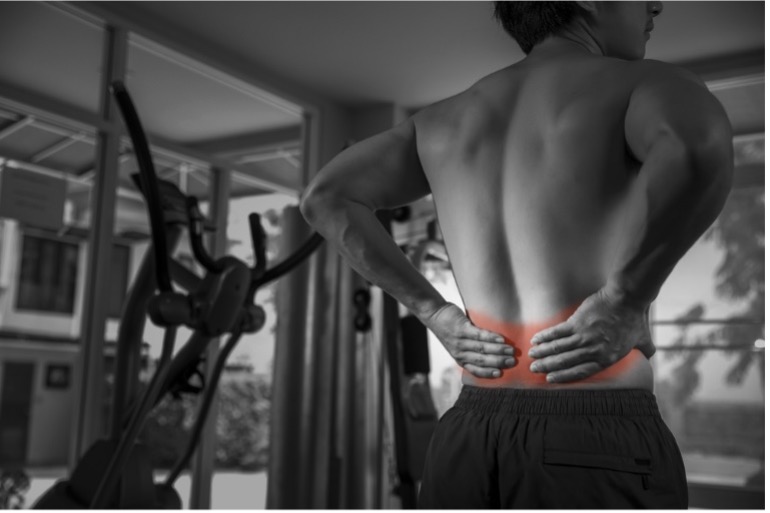
I could feel that his lower back was tighter on one side This could have been disc irritation, or it could have been his biomechanics, the way he sits and walks, and either a fixed or habitual posture. Telltale signs of collagen lines at the base of his neck and back suggested a thinning of the underlying discs. His buttock was acutely tender. His hamstring was slightly tenser, with sensitivity being increased again over the division of the sciatic nerve at the back of the knee, tight bands in his calf muscles, and a moving tenderness where his ankle flexors wove around his ankle.
This was all pointing to neuropathic changes to his L5 nerve root at the base of his spine. That means the sensitivity of the nerve root due to poor posture or ageing disc, as well as mild peripheral nerve changes, causing small contractures down the limb and his ache.
This type of problem is insidious and is often a normal part of ageing related to postural issues, causing disc narrowing, called spondylosis, and subtle changes to nerves, from very mild to severe neuropathy.
The symptoms can be anything from mild stiffness to pins and needles, numbness and various degrees of sharp burning and aching pains, often made worse on exercising.
Edwin needed a combination of treatments and skills to help resolve his problems. Over two treatments I gave him GunnIMS to relieve the deep-seated muscle problems at the base of his neck and back, plus acupuncture, laser, joint mobilisations and deep oscillation. I also used NLP and subtle mind mapping to get his head in the right place.
Ideally, I would have gone on to add shamanic reiki to heal issues in his auric body, balance his chakras, and use key acupuncture points in his fascial plane. However, after two treatments he was physically pain-free and elected to get on with his life.
If you are suffering long-term pain, and maybe even tried some treatments which have not helped, then it might be because the cause is more complex than first thought. Physical symptoms can manifest themselves due to a whole range of reasons, from mental to nutritional to physical, including neuropathic (nerve-related), or a combination of some or all these causes. It thus requires a deep and broad assessment to be able to create a successful treatment plan and positive outcome.
If you are in pain, we can help
Call 01889 881488 Now
Jean, Erica & Charlotte will be happy to help
Great news. The sun is shining, and it’s holiday time!
Hydration Questionnaire:
- Do you rarely have thirst / dry mouth?
- Do you rarely get headaches?
- Is your urine a mild (not dark) yellow colour?
- Are your skin and lips moist, not dry?
- Do you have regular bowel movements most days?
- Do you have less than two glasses of alcohol a day?
- Do you have five helpings of fresh fruit and vegetables a day?
- Do you have several glasses of fruit water / juice / herbal teas a day, even if resting?
- Do you avoid having too many salty snacks?
Score 1 for each Yes. Total 0—3 Red, 4—6 Amber, 7—9 Green. Get Nicky’s ‘4 Keys To Health’ book for more information.
Here is some simple advice to help you avoid ruining your holiday
What happens in a drought?
A hose pipe ban, a car wash ban, shorter showers, and less water in the bath. We all protect the vital stuff, like making sure we and our animals get water. Fortunately, we live in a country with more than its fair share of rain and our droughts don’t last too long, so a drought tends to be more of a temporary irritant than a serious problem.
 But what if a drought did last for a long time? What would happen to our gardens if they hardly ever got watered? Well, a lot of very poorly and dead plants and lawns that wouldn’t win any prizes for sure.
But what if a drought did last for a long time? What would happen to our gardens if they hardly ever got watered? Well, a lot of very poorly and dead plants and lawns that wouldn’t win any prizes for sure.
It’s doubtful anyone would argue with the above in principle. After all, it’s stating the blindingly obvious.
If it’s so obvious then, why is it that at least 75% of us and maybe as many as 90% are long-term dehydrated? Given that plants left dehydrated long-term will get weak and die, then it should come as no surprise that our complex bodies are likely to suffer the same fate. Why do we put ourselves at this risk?
Your body will start to react to dehydration with as little as a 1% drop in availability, and a priority system will start to kick in. Your brain needs a lot of water and your organs' functions are vital. These will get priority because these are more critical to life. Non-critical body parts will get a bit of what is left.
Up To 90% Of Us Are Dehydrated.
The list of potential problems from dehydration are huge and are linked to many diseases. The implication to overall wellness is obvious—stay dehydrated at your peril. As a clinic which treats patients every day with pain and injury, here are some dehydration issues we see:
- Just about every joint in your body has cartilage, which needs to be kept hydrated to stay healthy. Dehydrated cartilage will promote inflammation, pain and arthritis.
- Spinal discs need to stay moist and supple. Without adequate hydration this could cause a multitude of spinal problems.
- Muscles will cramp, swell, become tender, have reduced strength and possibly suffer tissue damage.
- Dehydrated tendons and ligaments can make you more prone to injury, pain and inflammation.
Long-term dehydration is clearly serious and is linked to many diseases. So why are we so prone to dehydration when it is so easy to fix?
Your Body Has Drought Management
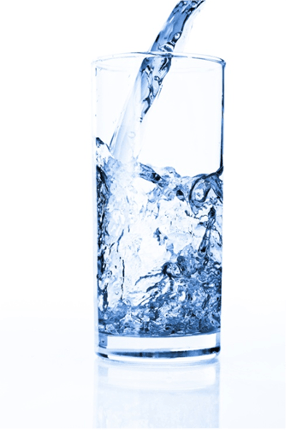 Many studies have shown that what we drink is just as important as how much we drink. In the UK caffeine-loaded beverages like coffee, tea and soda’s are prevalent. In fact, most of us don’t drink water at all.
Many studies have shown that what we drink is just as important as how much we drink. In the UK caffeine-loaded beverages like coffee, tea and soda’s are prevalent. In fact, most of us don’t drink water at all.
The problem with caffeine, if concentrated, is that it is a diuretic which in many cases stimulates us to lose more water than we consume in the drink itself. Thus, drinks like this act to dehydrate, not hydrate. It makes it worse.
This issue is contentious and we have to accept that many arguments will have a financial motive. But let’s use common sense. Most people in the UK drink tea and coffee as their main source of fluid intake. If these drinks are not diuretics, then how come nearly 90% of us are dehydrated?
There are many social factors which prevent adequate fluid intake as well. People whose environment does not provide easy access to a toilet, such as drivers for example, are very prone to low fluid intake.
A further factor is with the elderly, who simply don’t register they are thirsty in the first place, plus don’t want to drink too much to reduce visits to the loo.
Here are some simple guidelines on 'how to stay properly hydrated'
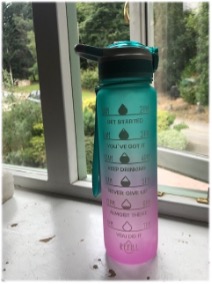
- Drink water as well as diuretic drinks. Recommendations vary but aim for about 1.2 litres per day
- First thing in the morning drink a big glass of water, not tea or coffee.
- If you are feeling hungry, maybe you are thirsty. Drink some water first as that quenches hunger.
- If you are feeling lethargic during the day, drink some water. Lethargy is an early sign of dehydration.
- If you get a bit of heartburn, try a glass of water first.
I use a water bottle which shows me how much water I need to drink all through the day. It gives great feedback, as it’s easy to see when I’m not drinking enough. A really simple and great idea.
If you are in pain, we can help
Call 01889 881488 Now
Jean, Erica & Charlotte will be happy to help
In the first three parts of this pain relief series
Your Pain Relief Plan Introduction
I have discussed what pain is and how your brain can choose the level of pain felt, depending on range of holistic factors, to the extent that a person with a severe physical condition can suffer almost no pain, while another with milder physical problems can be in intense pain.
I touched upon the meanings and causes of acute pain, chronic pain and neuropathic pain and how to correctly assess and then treat holistically, the latter strongly supported by latest scientific research.
In this final part, I will look further into treating the symptoms of chronic pain and why there is a choice between a maintenance or wellness approach.
Lastly, I will discuss this clinic's 4 Keys To Health wellness approach which fits very well with latest research indicators.
What’s the Difference Between Maintenance and Wellness Treatment For Chronic Pain
For some of you, there is always going to be resistance to adopting a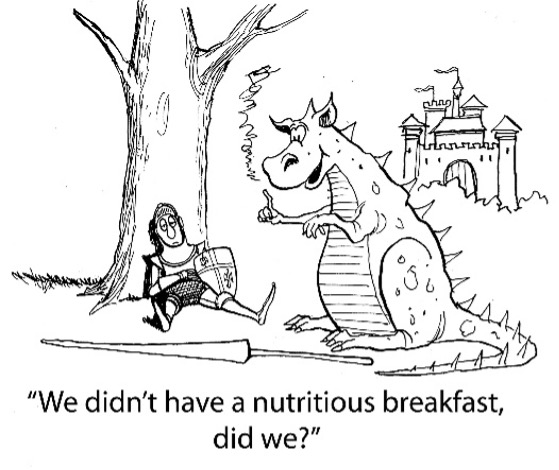 broad holistic approach to treatment and for you a more direct, hands on treatment regime is the best fit. It will be what you are comfortable with and only by being comfortable will the treatment be effective.
broad holistic approach to treatment and for you a more direct, hands on treatment regime is the best fit. It will be what you are comfortable with and only by being comfortable will the treatment be effective.
For others, who are more comfortable with embracing all things ‘wholistic’ then wellness will be a much better fit.
Note that we have switched holistic to wholistic above and this is not just a play on words. Historically, the term wholistic was used to convey treatment of the whole body and everything so far discussed has referred to the importance of exactly that. For example, the brain MRI scans proved a connection to wholistic factors.
The more recently adopted term of holistic, is subliminally referring to a hole, which is diametrically the opposite to the interpretation of whole.
At Nicky Snazell’s Wellness & Physiotherapy Clinic, our Wellness program adopts the full meaning of wholistic, and thus considers all factors such as diet, exercise, stress, social support to have significance, just as ancient doctors did. Our 4 Keys approach also provides a road map and monitors your progress to achieving improved overall health.
Such ‘soft’ factors are not included in our maintenance program and this will in many cases be a perfect fit to requirements.
Ultimately its up to you which approach suits you best. The most important issue is to ensure that if you are suffering from an unresolvable chronic condition, then you ensure you continue treatment to keep painful symptoms at bay and allow you to get on with your life and how you want to live it, confident in the knowledge that we have got your back if anything goes wrong. Far better that than existing not living, waiting for the next flare up, fearful to do the many things you love doing.
4 Keys To Health
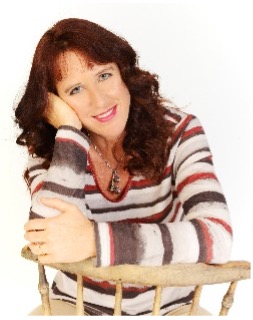 Our clinic has long promoted an approach to treatment which embraces both physical and social aspects. Nicky Snazell has written five books on this subject and has been invited to speak on over 30 radio stations right across the USA, to promote and educate an alternative to excessive opioid use, long before the COVID-19 pandemic started. The advice is equally important and valid to treating the forecast tidal wave of chronic pain coming.
Our clinic has long promoted an approach to treatment which embraces both physical and social aspects. Nicky Snazell has written five books on this subject and has been invited to speak on over 30 radio stations right across the USA, to promote and educate an alternative to excessive opioid use, long before the COVID-19 pandemic started. The advice is equally important and valid to treating the forecast tidal wave of chronic pain coming.
Nicky’s first book, The 4 Keys To Health, available from Amazon, described an approach which looked at every aspect increasingly considered important:
- Mindset
- Nutrition
- Lifestyle
- Fitness & exercise
A simple traffic light system was included to score patients and provide a preventative road map to better health. Wellness, or prevention, is naturally incorporated into the service we offer.
Thus, the direction of Nicky Snazell’s Wellness and Physiotherapy Clinic has been consistently towards providing a capability which exactly matches the need as proposed by latest research.

- Do your homework. Complete our 4 Keys to Health questionnaire, provided below, to both help you understand your current condition and allow you to go armed with this knowledge when you see your therapist.
- Write an action plan from your results, for example, 10 minutes plus exercise a day, more sleep, better diet. Include a bucket list of special things you enjoy.
- Only use a good therapist who comes highly recommended. Your health deserves nothing less.
- Act now. If you are in pain, get properly assessed and treated as soon as possible. Delay just means you will suffer pain longer and can make it worse. Some conditions, if left too long, are irreversible.
- Think long term. Get your problem fixed now and then embark on a plan to both improve your 4 Keys and help prevent reoccurrence. Armed with a completed health questionnaire, your therapist can create you a personalised road map to better health.
Call 01889 881488 Now
p.s. Don’t try to book online at this time as that is only suitable for existing clients already being treated for an existing problem.
In the first three parts of this pain relief series
Your Pain Relief Plan Introduction
I discussed why we feel pain and how the degree of pain felt due to lifestyle factors could vary widely from one individual to the next. Also, when long term, typically over 3 months, the brain would effectively lock the pain in. Emotional trauma, even as far back as childhood, had been found to lock in pain for almost a lifetime.
I then went into more detail about how pain works and discussed the implications of ageing and the differences between acute and chronic conditions, and the most effective ways of treating these.
With this as a background, we will now explore the causes of nerve-related neuropathic pain and how it gets locked into the body. This in turn clarifies why exercise and /or some drugs may not be the correct pain relief solution when suffering neuropathic pain.
Pain Assessment
It should be clear by now that it is vital to be properly assessed by a qualified therapist before treatment starts. Otherwise totally, the wrong treatment could be provided. But we need to go back one stage further to obtain an effective assessment.
In a separate series of blogs on A Different Perspective on Your Physiotherapy Assessment, I explained the vital steps needed for a successful assessment before even starting the physical assessment. This included creating the right environment to build connection and trust, without which a detailed understanding of the back story behind the problem could not be effectively communicated.
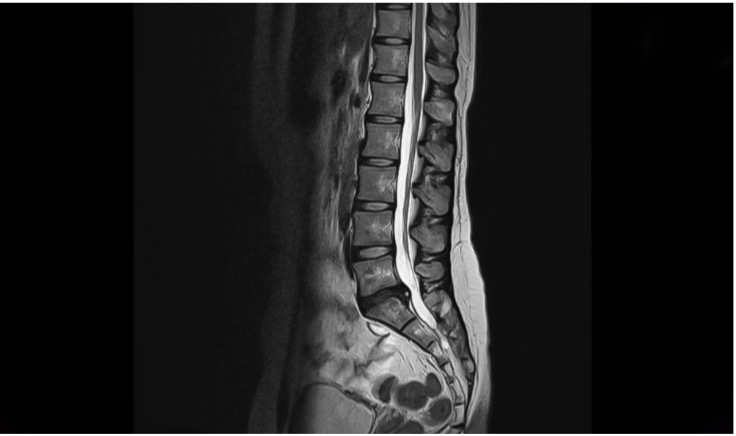 Even with this approach, therapists, however qualified, are trained to manually assess conditions but ultimately can only come up with a provisional diagnosis. To confirm this diagnosis, additional scans, such as EMG to look at nerve function, MRI, Xray and ultrasound may be needed. Even then, some conditions are invisible to such scans. Scans may thus be able to eliminate some causes, but not able to confirm the actual cause. A good example is that neither MRI nor X-ray can see muscle spasms, the latter being responsible for a lot of neuropathic problems, such as sciatica.
Even with this approach, therapists, however qualified, are trained to manually assess conditions but ultimately can only come up with a provisional diagnosis. To confirm this diagnosis, additional scans, such as EMG to look at nerve function, MRI, Xray and ultrasound may be needed. Even then, some conditions are invisible to such scans. Scans may thus be able to eliminate some causes, but not able to confirm the actual cause. A good example is that neither MRI nor X-ray can see muscle spasms, the latter being responsible for a lot of neuropathic problems, such as sciatica.
Holistic Treatment
Those of you who have previously had a dislike or mistrust of the term holistic, should by now, if you have read my previous three parts of this series, realise that even latest scientific technology has measured non scientific factors as having significance. It has been confirmed that pain is modulated by factors such as attention, anticipation, empathy, placebo, meditation, fear, anxiety, posture, emotion and movement. This, in turn, has confirmed the benefits of a more holistic approach to assessment and treatment.
Our ancient Doctors, called Shamans at the time, always knew that the link between mind and body was key to healing. Those same ancient Doctors would look at the whole body, the mindset, fitness, diet and lifestyle of the patient. They also knew that the level of social support the patient had was a key factor.
Latest research is confirming these same links between mind and body as it has now been found that without consideration of the whole, Long-COVID sufferers, for example, will struggle to heal.
Further, we know that the backstory and meaning to the patients’ pain is
essential to understanding the suffering. Without listening to and understanding the backstoryand
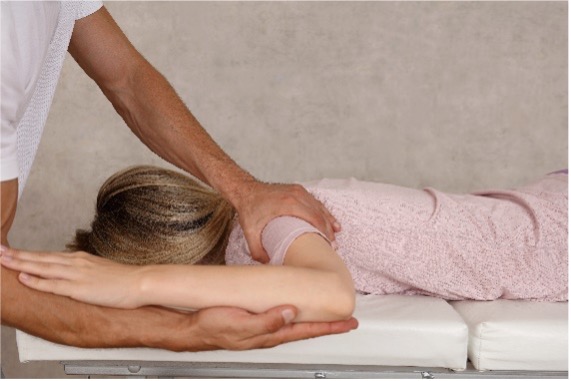 meaning, the minds’ healing process cannot start. Evidence suggests that in chronic and complex pain cases, there are likely to also be problems with fear, mood and personality.
meaning, the minds’ healing process cannot start. Evidence suggests that in chronic and complex pain cases, there are likely to also be problems with fear, mood and personality.
The negative factors in our modern day lifestyle, particularly as the world is experiencing a pandemic, are worsening. As a consequence, it is feared that that there will be both an increase in the rate of chronic pain cases and the severity of its impact will have widespread social implications.
The case for a more holistic approach is thus building if we want to successfully fight this growing threat.
Pain Relief – The Way Forward
Pain, as we have seen, can result from a multitude of causes. Pain can be acute or chronic, physical or emotional, physical or neuropathic and is impacted by other factors including emotion, mindset, exercise, nutrition and lifestyle.
Clearly, the therapist you choose needs to be properly qualified to assess and treat you both physically and holistically and incorporate the significance of your mindset, fitness, diet, lifestyle, emotional support network and be empathetic to your story.
In the final part of this blog series Pain Relief – Your Escape Plan I will explain in more detail the approaches to treating the symptoms of chronic pain problems and highlight the differences between maintenance and wellness. Lastly, I introduce our clinic's own 4 Keys To Health approach and how it fits with Wellness.
Call 01889 881488 Now
p.s. Don’t try to book online at this time as that is only suitable for existing clients already being treated for an existing problem.
In parts 1 and 2 of this pain relief series:
Your Pain Relief Plan Introduction
I discussed why we feel pain and how the degree of pain felt due to lifestyle factors could vary widely from one individual to the next. Also, when long term, typically over 3 months, the brain would effectively lock the pain in. Emotional trauma, even as far back as childhood, had been found to lock in pain for almost a lifetime.
I then went into more detail about how pain works and discussed the implications of ageing and the differences between acute and chronic conditions, and the most effective ways of treating these.
With this as a background, we will now explore the causes of nerve-related neuropathic pain and how it gets locked into the body. This in turn clarifies why exercise and /or some drugs may not be the correct pain relief solution when suffering neuropathic pain.
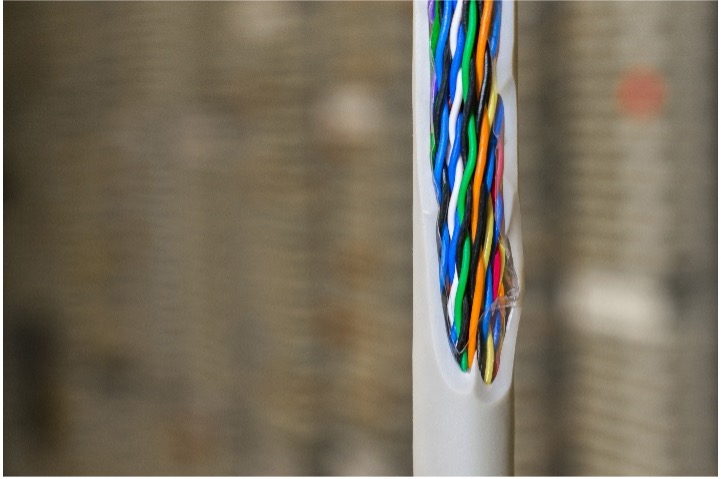 We have explained that the pain signal is passed through the nervous system up to the brain. As an analogy of a nerve cord, imagine a tight bundle of tiny electrical wires and that each one of these wires is connected to a specific part of the body. Imagine, as an example, an injury and inflammation to your foot and that one such ‘wire’ is connected to a very small part of that injured area. It will send a pain signal to the brain, and of course, the brain knows exactly where the wire is connected in the body. The result is you will feel pain in your foot.
We have explained that the pain signal is passed through the nervous system up to the brain. As an analogy of a nerve cord, imagine a tight bundle of tiny electrical wires and that each one of these wires is connected to a specific part of the body. Imagine, as an example, an injury and inflammation to your foot and that one such ‘wire’ is connected to a very small part of that injured area. It will send a pain signal to the brain, and of course, the brain knows exactly where the wire is connected in the body. The result is you will feel pain in your foot.
Now let’s go one stage further. That nerve bundle travels down your spine until it reaches the point at which it exits the spinal cord and passes down your leg to your foot. Imagine I could find that exact same wire in your spine. If I were to squeeze it, your brain would interpret that as a pain signal linked to your foot. You would feel exactly the same foot pain, but the problem this time is in your back. You may or may not have a real problem in your foot, but you would still feel pain in your foot.
Long-term pressure on a nerve will cause it to become super-sensitive and send pain signals even when there is no injury
Now, let’s go another stage further again. Imagine that nerve in your spine had previously been strangled for a period of time by a tight muscle contracture. Extended pressure on a nerve will cause it to function incorrectly and it will become ‘super-sensitive ’. That nerve will now send pain signals to the brain even when there is no current injury. In effect, the previous injury is locked in. Imagine a faulty wire having a similar effect.
’. That nerve will now send pain signals to the brain even when there is no current injury. In effect, the previous injury is locked in. Imagine a faulty wire having a similar effect.
Pain like this is called neuropathic pain because the nerve is super-sensitive.
The Do’s and Don’ts of Exercise
It’s not necessarily the case that exercises are appropriate at the start of treatment, as in some cases exercises, incorrectly timed, will make matters worse, not better. Neuropathic pain resulting from a trapped nerve is an example where exercises should not be given until the trap has been removed, allowing the nerve to move freely.
As an analogy, imagine I grabbed your wrist so hard that it hurt. Your reaction might be to try to pull your arm and wrist out of my grip. But if my grip is too strong, all that will happen is that your arm will ache and your wrist will be very sore. Yanking on a trapped nerve by exercising will have the same result. Exercise prescription needs to wait until the nerve is no longer trapped.
The Pro’s and Cons of Pain Medication
Pain may be a signal that something is wrong, but at best it’s not pleasant and at worst it can prevent normal daily living. If long term, it can cause depression and a loss of will to live. Thus, medication is an important part of our arsenal to control the pain until the cause of the pain has been established and then successfully treated.
There are, however, downsides to medication. The first and most obvious is that the medication works by masking or blocking the pain signals and does not treat the actual cause of the pain. Further, by masking the pain, it prevents us from getting the warning that something is wrong. Thus, we may continue to do the very things that the pain is trying to warn us not to do. If used long term, medication may, as a consequence, exacerbate the problem.
Opioids are ineffective in treating chronic pain
Secondly, when the pain level is severe, opioid based drugs are often prescribed, with no differentiation between acute and chronic conditions. The problem here is that chronic conditions will most likely need long term medication and opioids are naturally addictive. In fact, so much so, that opioids have caused the majority of drug addictions in the USA. To make matters worse, opioids have been recognised for some time as being ineffective in treating chronic conditions.
Thirdly, most drugs have negative side effects and long-term use can be dangerous.
To summarise, trapped nerves will cause neuropathic pain, a form of locked in pain which in itself can be misleading, as incorrect diagnosis could lead to treatment of where the pain is perceived, instead of where the cause of the problem resides.
It thus should come as no surprise that exercising, which will mean pulling on nerves to allow movement, will only make matters worse if those nerves are trapped.
Drugs are an effective short term solution, but care should be taken to avoid opiates when dealing with chronic conditions, as it is well proven that opiates are ineffective in such cases.
In the next part of this pain relief series Your Pain Relief Plan Part 4 I will discuss the assessment and the scientifically proven importance of holistic factors.
Call 01889 881488 Now
p.s. Don’t try to book online at this time as that is only suitable for existing clients already being treated for an existing problem.
